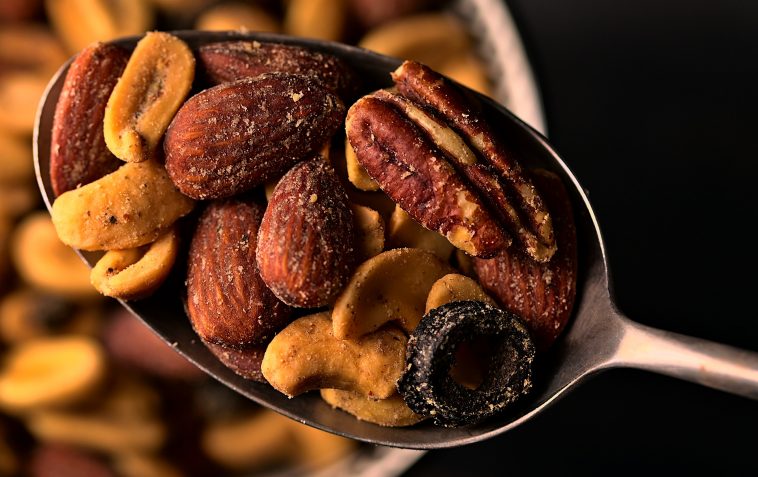Adding value to nuts has always played a vital role within the tree nut production industry. The process improves the profitability of producers, it empowers them, provides safe, quality, and branded food to consumers, reduces post-harvest losses and encourages the growth of subsidiary industries. Modified and enhanced agricultural products attain a higher market value and a longer shelf life.
One of the subsidiary industries benefitting from the value addition of nuts is the culinary industry. Various processing methods are used to create a versatile category of foods and food ingredients. Multiple methods and recipe options produce unique products with wide ranging flavours.
Some of the methods employed are oil and dry roasting, seasoning, and coating and blending.
According to Heat and Control (2022), oil roasting is a process by which nuts are submerged or covered in hot oil and fried. Roasting accomplishes many tasks, including flavour enhancement, shelf stability (1 to 1,5% finished moisture), and destruction of microbes, such as salmonella. For example, almonds require two minutes at 127° C to destroy microbes.
Basic frying principles can apply to most nut varieties (such as peanuts, almonds, cashews, pecans, walnuts, Brazil nuts, and sunflower seeds). Certain nut types, such as macadamias, need special care and handling considering their high cost and fragility. Also, because of their delicate flavour, it is necessary to fry them in high quality oil.
To ensure that the oil quality is correct, potential oils are tested for quality before use. Based on the results, the oil of choice should maximise the freshness and shelf life of the nuts. Common oils used for roasting are canola, safflower, sunflower, peanut, and various hydrogenated blends. For oils that are solid at room temperature, heat tracing generated by steam or electricity sources is used for all piping and tanks.
Roasting can be via batch oil roasting and continuous roasting. In batch oil roasting the nuts in a stainless-steel basket are cooked in hot oil in a machine similar to a chip fryer, whereas with continuous roasting, the nuts travel through roasters continuously via a mesh conveyor system. It is important to manage the frying process as nuts can easily be burnt, thus the frying time and temperatures have to be efficiently monitored. To maintain consistency, customised conveyors are usually used, especially for a large-scale commercial setup. The conveyor design takes into account the physical and chemical attributes of the nuts to make sure that the production rate and uniform product depth is maintained throughout the roasting process.
Various processes can take place prior to oil roasting that impart a specific mouth feel, taste, and flavour experience (such as brine soaking, coating, and drying). If nuts are dry roasted prior to coating, frying will be required to cook the coating only.
Dry roasting typically involves nuts being tumbled around in a machine, or in a cylinder, which passes over gas fired burners. An even distribution of heat during this process helps prevent scorching or burning. Some machines use hot air to heat the nuts, which in some cases is utilised to decrease oil content.
Heat and Control (2022) states that entry-level processors use forced air or semi-industrial type convection ovens with nuts in a single layer, stirring regularly to avoid surface burning. Large volumes are typically roasted in custom design drying ovens and include rotary type dryers or roasters.

(Source: Pixabay)
Certain types of rotary dryers or roasters are designed to lift, to fold, and to expose each product piece to fan-forced heated air thus fluidising the product bed so that the product is more evenly roasted and dried. This process is beneficial not only for traditional roasted nut products, but also for honey-roasted and dough-coated Japanese- or Holland-style nuts.
Independent heating zones allow for precise temperature control throughout the process.
During the seasoning and coating process, glazing oil, water, salt, spice-based seasonings, sugar, dough, chocolate, yogurt, or batters are added to the nuts. To improve the flavour and texture of the nuts, these can be added to the base formulation with frying and drying temperatures to enrich their savour. Colour can also be added to the base flavour to satisfy different market requisites and preferences.
Seasoning is crucial during nut processing as it allows snack processors to add sweet or savoury dry ingredients, or a water-/oil-based seasoning emulsion to traditional nut products, as well as dough-coated products. The better the flavour, the better the marketability of the nuts, which creates a higher and increasing demand for the nuts and in turn improve the profits!
The coating and seasoning of the nut can be carried out in the processing area, in the packaging room, or on the belt along the line. Unlike on-machine seasoning transpiring in the packaging room, directly before the nuts goes into the weigher/scale and bag maker, process area seasoning happens directly after the dry roaster or after the cooling process and before transferring into the packaging room.
References
https://www.heatandcontrol.com/solutions/nuts.
Lal, B. L., Sharma, P. (2019) Importance of Value Addition in Agriculture. Available at: http://www.ear-lytimes.in/newsdet.aspx?q=258317
Nut Processing Methods and How to Create Exciting and Unique Products. Available at: https://www.heatandcontrol.com/blog/nut-processing-methods-and-how-to-create-exciting-and-unique-products
Tree Nuts. Available at: https://www.sciencedirect.com/topics/agricultural-and-biological-sciences/tree-nut
Nuts. Available at: https://www.agmrc.org/commodities-products/nuts
Clark, J. P. (2002) Processing Tree Nuts. Available at: https://www.ift.org/news-and-publications/food-technology-magazine/issues/2002/june/columns/processing
Nut Products. Available at: https://www.sciencedirect.com/topics/agricultural-and-biological-sciences/nut-products









